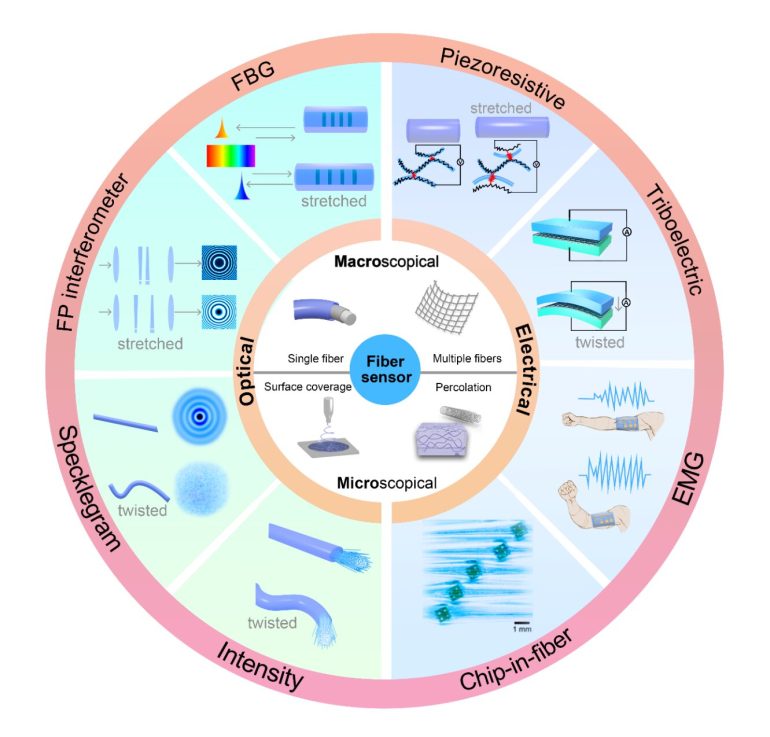- AI advancements, especially in machine learning and deep learning, have enhanced wearable device capabilities.
- Recent studies highlight using traditional and deep learning algorithms with fiber sensors.
- Fiber sensors are categorized into optical and electrical types, offering diverse applications.
- Current fiber sensors often focus on single-signal data, with room for integrating more data types.
- Emerging machine learning techniques like reinforcement learning and GANs are underutilized in this space.
- Ongoing research is expected to lead to smarter, more efficient, and widely adopted wearable devices.
Main AI News:
In recent years, the rapid growth of artificial intelligence (AI) has significantly expanded the capabilities of wearable devices, particularly in processing complex data. At the heart of this revolution is machine learning, a vital subset of AI, and its deep learning offshoot, which have driven this transformative wave in technology.
Machine learning simplifies the data processing journey by automating feature extraction, while deep learning delves deep into hidden patterns within data. These approaches are well-suited to the vast amounts of information produced in today’s data-driven world.
A recent publication in Advanced Devices & Instrumentation provides a thorough analysis of the machine learning algorithms currently used with fiber sensors, dividing them into two main categories: traditional and deep learning algorithms. Traditional algorithms include linear regression (LR), k-nearest neighbors (KNN), support vector machines (SVM), random forests, XGBoost, and k-means clustering.
The study also categorizes fiber sensors based on their operating principles and sizes. These principles are mainly divided into optical and electrical types. Optical sensors include FBG, Fabry-Pérot interferometers, Specklegram, and light intensity sensors, while electrical sensors cover piezoresistive, triboelectric, EMG, and chip-in-fiber technologies.
Fiber sensors offer a compelling alternative to conventional electronic devices for everyday wear. When paired with machine learning, they have the potential to revolutionize smart clothing. However, several challenges remain.
First, many current fiber sensors employing machine learning focus on a single signal type, often mechanical force and deformation, such as pressure-based gesture recognition in gloves. Critical data, including light intensity, color, temperature, humidity, and surface roughness, are not yet fully integrated.
Second, as machine learning algorithms continue to advance, cutting-edge techniques such as reinforcement learning, generative adversarial networks (GANs), self-supervised learning, and attention mechanisms (GPT) have had limited application in this sector.
As these research areas develop further, wearable devices combining fiber sensors and AI are expected to become more intelligent, comfortable, and efficient, ultimately becoming an integral part of everyday life.
Conclusion:
Integrating advanced AI algorithms with fiber sensors in wearable devices represents a significant growth opportunity in the smart wearables market. As the technology matures, incorporating more sophisticated data types and underutilized AI techniques, these wearables will likely become essential in everyday life. This evolution could open up new markets, drive demand for AI-enhanced products, and increase competition among tech companies to innovate in this space. Companies that capitalize on these advancements will be well-positioned to lead in the rapidly expanding wearables market.

